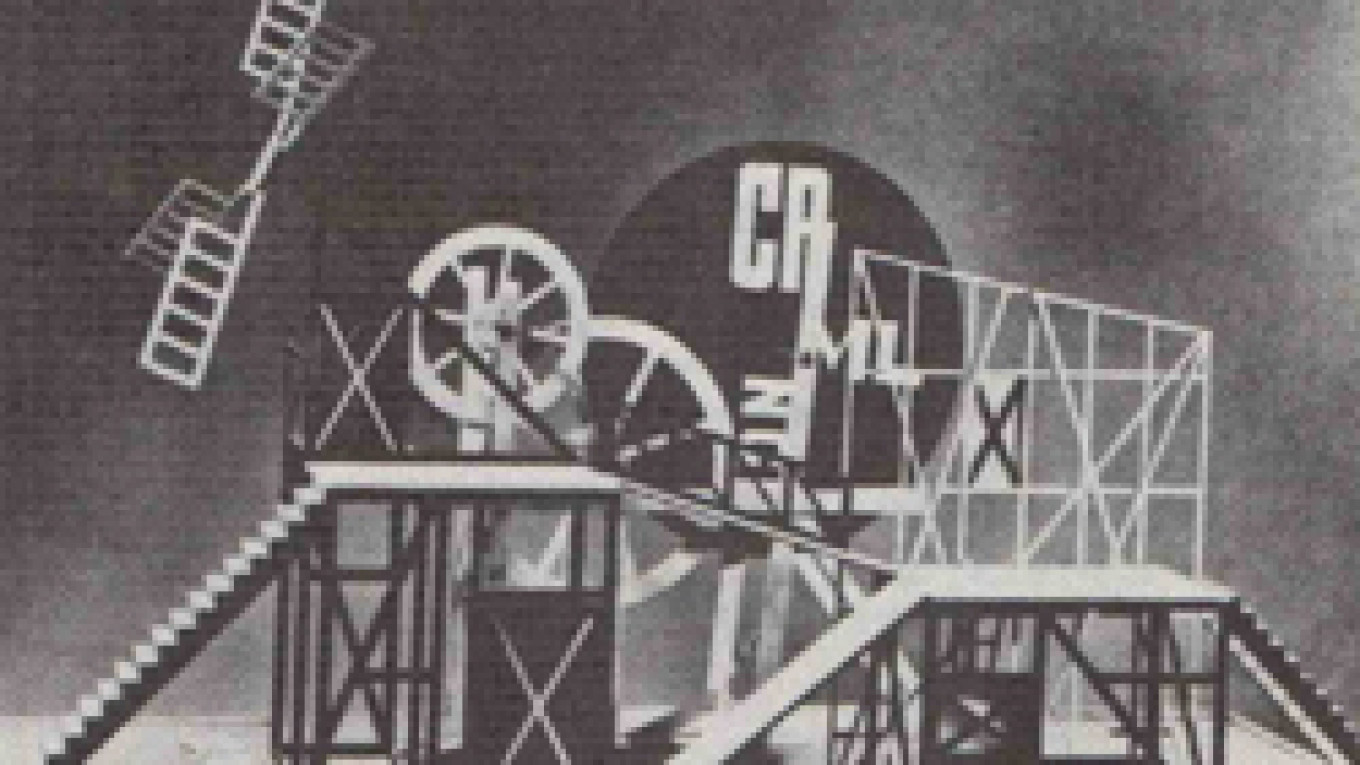It was a time when the notion of discrete genres began crumbling like a house of cards, and one of the great crossroads where artists met was the theatrical stage. The composer Shostakovich wrote music for the director Meyerhold. The painters Natalya Goncharova, Lyubov Popova and Alexandra Ekster created sets and costumes for various directors, including Meyerhold and Alexander Tairov. The poets Blok and Vladimir Mayakovsky began writing plays. A man named Eisenstein, who was educated to make theater productions, began working with film.
Since I am always fascinated by the inter-pollination of various art forms, I recently was compelled to take in a small exhibit called “Theater in Works by Russian Artists” at the New Tretyakov Gallery on Krymsky Val. It is scheduled to be up until March 10, so you have plenty of time to do the same.
I’ll say it right away: I was underwhelmed by the two small rooms of mostly sketches for set and costume designs. But there was compensation: I was more than intrigued by what I had to get past before I reached halls 21 and 22 where the exhibit is located.
What you see by working your way through the first 20 halls of art collected from the 1910s and 20s is that something theatrical was constantly pushing its way into the consciousness of artists of that time. Incredible bursts of color, bold geometrical forms, three-dimensional constructions, sensations of movement and a sophisticated play with the limits and possibilities of space — these are the kinds of things artists were grappling with. In so many of these paintings, drawings and applications, you feel a whole world coming to life before your eyes. These are not mere pictures; they are spaces where something happens.

|
| Alexandra Ekster's "Composition"
(1915). Courtesy Galart, Moscow. |
Popova’s constructivist designs for Meyerhold’s production of “The Magnanimous Cuckold” in 1922 have the feel of a sculpture one might see appearing in the 1960s — a fascinating so-called “machine for acting” that consisted of wheels, boxes, stairs and platforms almost as if it were a heap of junk made useful.
But this kind of synthesis was surely to be expected from these artists, all of whom were working in — or at least thinking about working in — theatrical spaces as much as on canvas. More intriguing is the inherent theatricality one sees expressed in the works of an artist who rarely, if ever, actually worked in theater.
Rodchenko, surely one of the most extraordinary photographers ever to pick up a camera, had an astonishing command of geometry, shading and texture. His angled portraits of common faces and images of shade cast on or by architectural structures have the feel of highly theatrical scenes frozen for a moment in time. One can imagine a young person studying directing today doing worse than to turn to Rodchenko’s photos for an understanding of the organization of images and objects in space.
Alexander Deineke, whose enormous paintings of workers and soldiers could — and still can — be oppressive in the political expediency they represent, were also striking for their theatricality. His “The Defense of Petrograd,” originally painted in 1928 but represented here in a copy the artist himself made in 1964, has numerous planes of action flowing in different directions, to say nothing of different “plots” unfolding in the foreground, the background and up above. No less impressive in this regard is his 1926 painting “Building New Workshops,” a monumental piece in which the depiction of a new factory shell under construction could easily double as a theatrical stage and set.
Yury Pimenov, in “Get Heavy Industry Going!” (1927), took on a task similar to Deineke. He, too, depicted a factory as if it were a theater space with various pockets of action taking place on various planes.
The sensation one gets strolling past these art works made mostly between 1910 and 1930 is one of the art of painting struggling to break out of its pictorial, two-dimensional limits and to transform itself into something dynamic and active. In these works you feel the echoes of an era that prompted artists of all kinds to step outside the boundaries that had limited their predecessors. No wonder, then, that many of these artists were drawn to work in the theater, and that theater artists were compelled to find ways to collaborate with them.
If the exhibit I originally went to see ended up being less than inspiring, the road I took to discover that delivered more than I expected. Isn’t that the way things work?
A Message from The Moscow Times:
Dear readers,
We are facing unprecedented challenges. Russia's Prosecutor General's Office has designated The Moscow Times as an "undesirable" organization, criminalizing our work and putting our staff at risk of prosecution. This follows our earlier unjust labeling as a "foreign agent."
These actions are direct attempts to silence independent journalism in Russia. The authorities claim our work "discredits the decisions of the Russian leadership." We see things differently: we strive to provide accurate, unbiased reporting on Russia.
We, the journalists of The Moscow Times, refuse to be silenced. But to continue our work, we need your help.
Your support, no matter how small, makes a world of difference. If you can, please support us monthly starting from just $2. It's quick to set up, and every contribution makes a significant impact.
By supporting The Moscow Times, you're defending open, independent journalism in the face of repression. Thank you for standing with us.
Remind me later.


